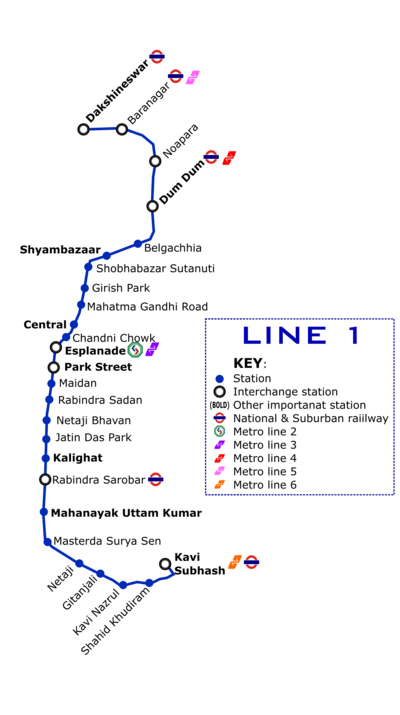A kolkata metro app demo.
This is a simple C++ program of a Demo Metro app. This will take information (name) of the source station and the destination station, of Kolkata Metro, from the user and display the fare and shortest metro route to reach the destination. It will also be having a metro map for commuter’s better navigation.
The idea is implemented using Graph and Heap data structures. The graph has nodes and edges. Nodes represent a metro station that will be containing certain information regarding that station like its name, its metro corridor, and the lines which it connects. Edges (the connection between two nodes) represent the distance between the two stations and the cost of each edge will be equal to the distance between the two of its connecting stations(nodes).
By using different algorithms like Dijkstra, breadth-first search, depth-first search, etc, the shortest path between the source station and the destination station is determined, and accordingly, the fare is being calculated on the basis of the total distance between the two stations. Finally, the metro route between the two stations and the total fare is displayed.
Given a weighted, undirected, and connected graph of V vertices and E edges, Find the shortest distance of all the vertex’s from the source vertex S.
Example 1:
Input: Adj list : [[1,2,2],[1,4,1],[2,1,2],[2,3,4],[2,5,5],[3,2,4],[3,4,3],[3,5,1],[4,1,1],[4,3,3],[5,2,5],[5,3,1]]
Output: [0,2,4,1,5] Explanation: Given the following undirected graph, the shortest distance from node 1(source node) to itself is definitely zero. For nodes 2 and 4, the minimum distance is 2 and 1 respectively. For node 3, the possible paths are 1->2->3(cost = 6) or 1->4->3(cost = 4) or 1->2->5->3(cost = 8). The minimum of these three paths would be our answer which is 4. For node 5, the possible paths are 1->2->5(cost = 7) or 1->4->3->5(cost = 5) or 1->4->3->2->5(cost = 13). The minimum of these three paths would be our answer which is 5.
Approach-
- We would be using a min-heap and a distance array of size N initialized with infinity (indicating that at present none of the nodes are reachable from the source node) and initialize the distance to source node as 0.
- We push the source node to the queue.
- For every node at the top of the queue we pop that element out and look out for its adjacent nodes. If the current reachable distance is better than the previous distance indicated by the distance array, we update the distance and push it in the queue.
- A node with a lower distance would be at the top of the priority queue as opposed to a node with a higher distance. By following the steps 3, until our queue becomes empty, we would get the minimum distance from the source node to all other nodes. Here’s a quick demonstration of the same.

